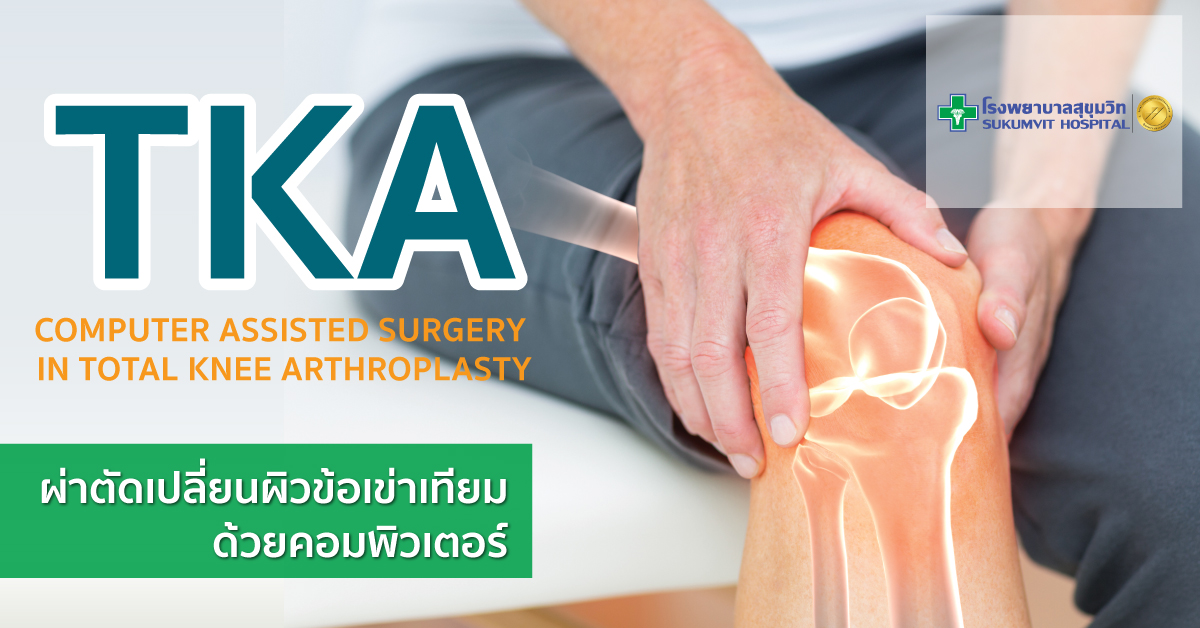TKA - Computer-assisted knee joint replacement

Computer-assisted knee joint replacement
Using computers to create an image of a knee joint which will be replaced with an artificial one. Data is fed into a computer during the surgery, creating a digital model image, which has all specific characteristics of each patient’s knee joint, helping the surgeon in locating the exact position for correct joint surface placement. It reduces errors or post-surgery complications, allowing for comfortable, almost natural use of knee joints, as well as extending the lifetime of the artificial knee joint.
Surgery based on minimal invasive techniques, combined with computer-assisted surgery.
A new method of knee joint replacement surgery which was developed in order to minimize the incision size, or otherwise known as "Minimal Invasive Surgery". It is required much smaller incisions which healed faster, but, as it was discovered later, it created many other difficulties due to the much smaller size of the incision making the surgeon unable to see the surgery area clearly, which resulted in much higher risk of imprecise placement of artificial knee joint surface making it sit loosely and wear out much faster.
At the same time, using computer-assisted knee joint replacement (CAS) which was introduced in combination with minimal invasive surgery technique helped surgeons to get much more data during surgery. Even though the incision size is very small, they are still able to see the image of the knee joint on the computer, which increases precision and makes the procedure safer, reducing possibilities of incorrect knee joint surface placement.
What are the advantages of using minimal invasive surgery techniques in knee joint treatment?
Common methods of knee joint replacement surgery require an incision of approximately 15cm in length, while minimal invasive surgery requires a much smaller incision, approximately 8 cm long. Apart from smaller incision length, it also involves much smaller injury to inner tissues, which is much more advantageous for a patient in many aspects.
Advantages of this treatment method
- Smaller, shorter incision, which looks better.
- Less post-surgery pain.
- Less blood loss during surgery, which is safer for senior patients.
- Short post-surgery recovery period, patient is able to walk faster compared to using conventional surgery methods.
Limitations
Using minimal invasive surgery techniques in knee joint replacement has many advantages, but is not suitable for all patients. Here are the exceptions:
- Patients with severe cases of osteoarthritis, as well as considerable knee joint angulation
- Patients with severe cases of ankylosis when knee joint cannot be flexed during surgery
- Highly obese patients
These cases are not suitable for surgery, using this technique.
In any case, computer-assisted knee joint replacement surgery has been proved to be very helpful in performing high-precision surgeries which are cost-effective compared to the increase of life cycle of the artificial joint, which does not require corrective surgeries in the future.
For more information, please contact : Orthopaedics Surgery Center
Location: 1st Floor, Sukumvit Hospital.
Service time: 07.00 - 20.00
Contact: 02-391-0011 ext. 110, 111
